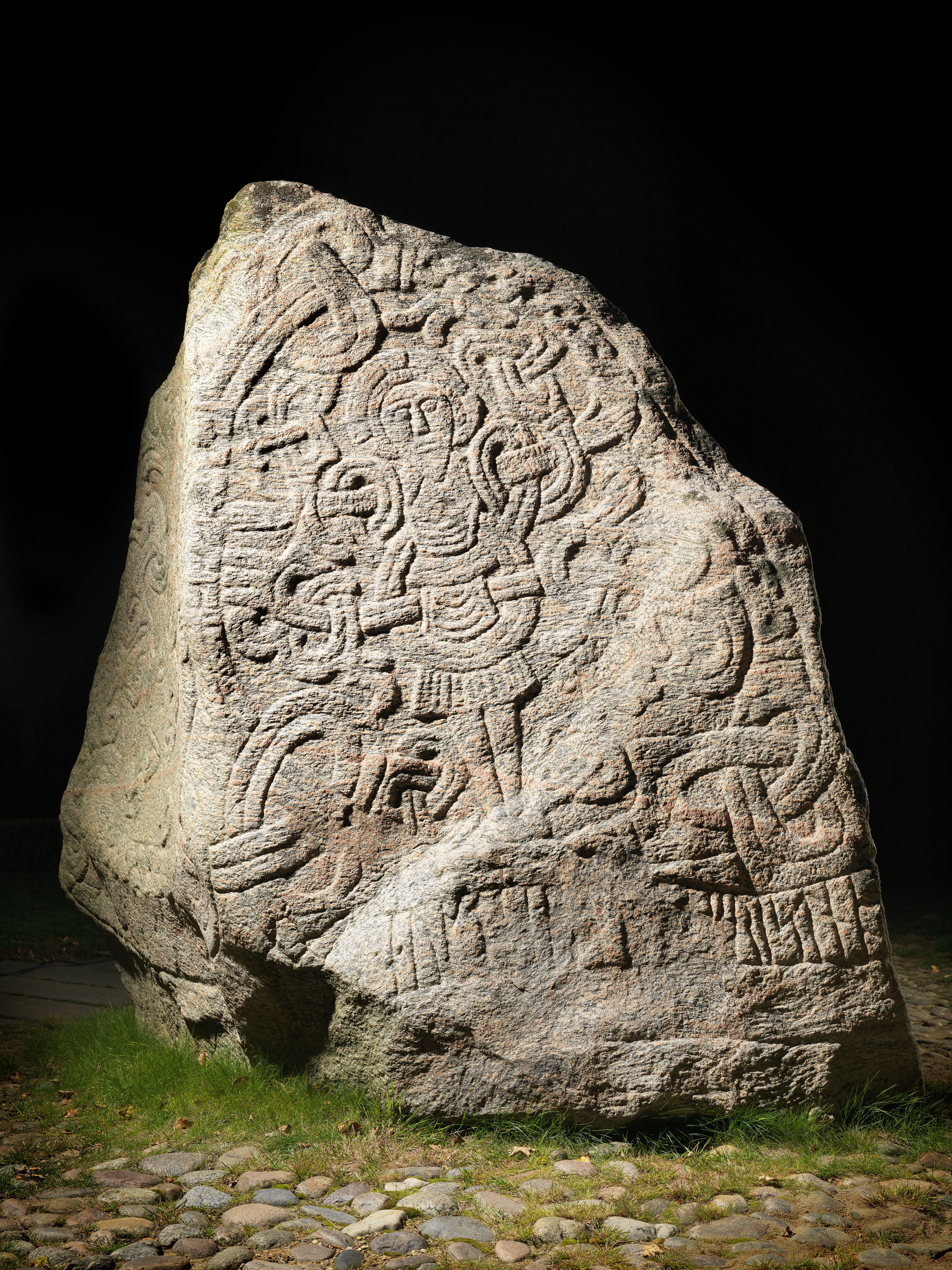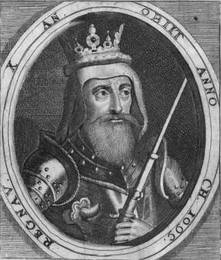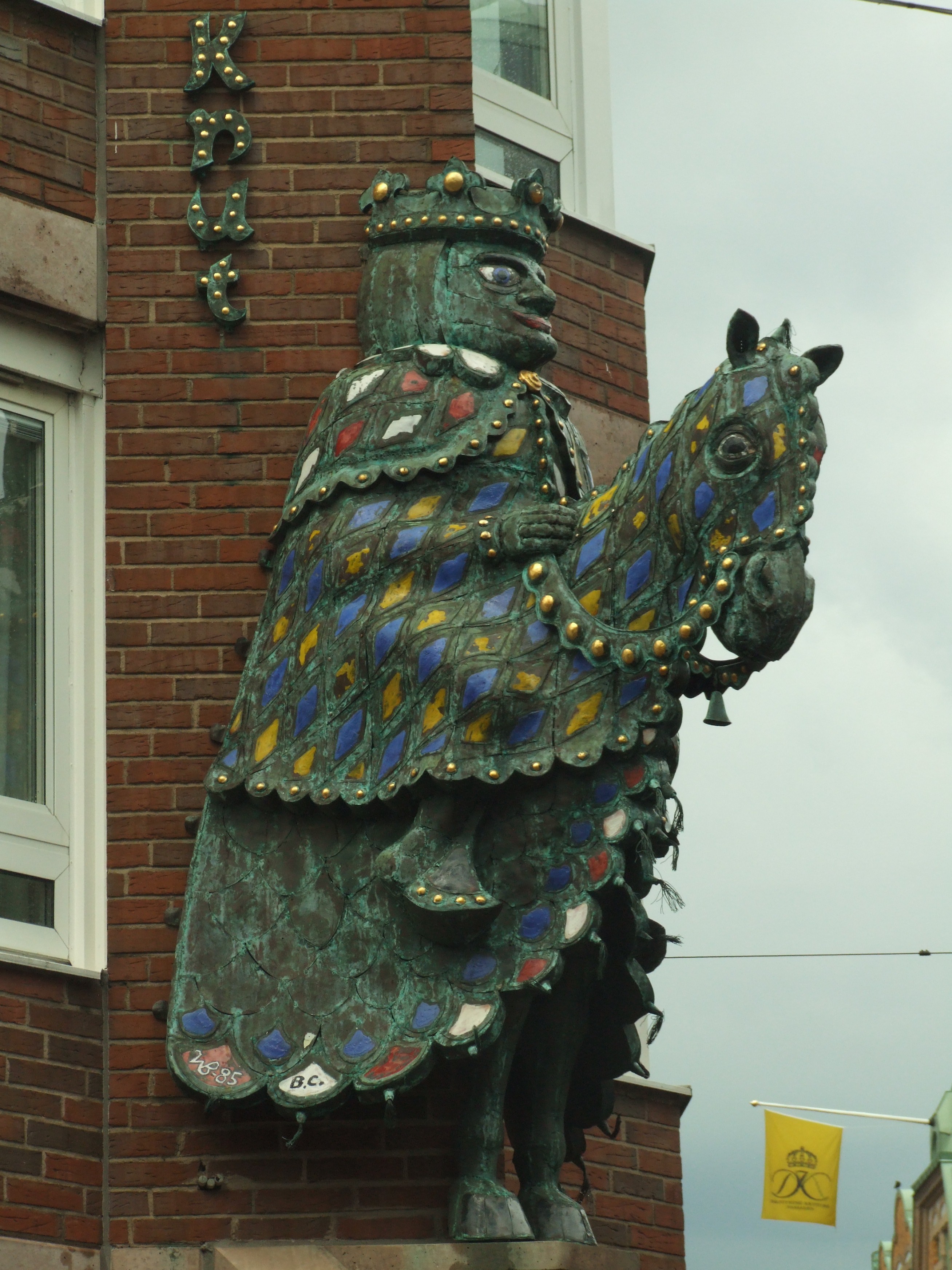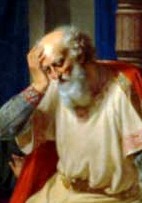|
Valdemar III Of Denmark
Valdemar III (1314–1364) was King of Denmark from 1326 to 1329, while he was underage; he was also Duke of Schleswig as Valdemar V in 1325–26 and from 1330 to 1364. He was a rival king set up against the unsuccessful Christopher II and was widely opposed by his subjects. His term was ended when he abdicated. Sometimes the earlier King Valdemar the Young (c. 1209–1231) is also referred to as Valdemar III. Biography Valdemar's father was Duke Eric II of Schleswig and his mother was Adelaide, daughter of Henry I of Rendsborg. When his distant kinsman and the head of the rival royal branch Christopher II of Denmark was exiled from his kingdom, Holsteiner and Danish high nobles got to choose a new king. Their choice fell to 11-year-old Duke Valdemar V of Schleswig, who was the head of the branch descended from King Abel of Denmark. Due to his young age, his maternal uncle, the mighty Count Gerhard of Rendsborg ( Gerhard III of Holstein) who also was the biggest pawnbroker ... [...More Info...] [...Related Items...] OR: [Wikipedia] [Google] [Baidu] [Amazon] |
King Of Denmark
The monarchy of Denmark is a constitutional political system, institution and a historic office of the Kingdom of Denmark. The Kingdom includes Denmark proper and the autonomous administrative division, autonomous territories of the Faroe Islands and Greenland. The Kingdom of Denmark was already consolidated in the 8th century, whose rulers are consistently referred to in Franks, Frankish sources (and in some late Frisians, Frisian sources) as "kings" (). Under the rule of King Gudfred in 804 the Kingdom may have included all the major Lands of Denmark, provinces of medieval Denmark. The current unified Kingdom of Denmark was founded or re-united by the Vikings, Viking kings Gorm the Old and Harald Bluetooth in the 10th century. Originally an elective monarchy, it became hereditary monarchy, hereditary only in the 17th century during the reign of Frederick III of Denmark, Frederick III. A decisive transition to a constitutional monarchy occurred in 1849 with the writing of th ... [...More Info...] [...Related Items...] OR: [Wikipedia] [Google] [Baidu] [Amazon] |
Constitutio Valdemariana
In Roman law, a ''constitutio'' ("constitution") is any legislative enactment by a Roman emperor. It includes edicts, decrees (judicial decisions), and Rescript, ''rescripta'' (written answers to officials or petitioners). ''Mandata'' (instructions) given by the Emperor to officials were not constitutions but created legal rules that could be relied upon by individuals. One of the most important constitutions issued by a Roman emperor was Caracalla, Caracalla's ''Constitutio Antoniniana'' of 212, also called the Edict of Caracalla or the Antonine Constitution, which declared that all Peregrinus (Roman), free men of the Roman Empire were to be given Roman citizenship and all free women the same rights as Roman women. References Further reading *H. F. Jolowicz and B. Nicholas, ''Historical Introduction to Roman Law'', 3rd edn. (1972) *Tony Honoré, ''Emperors and Lawyers'' (1981; 2nd edn. 1994). Roman law {{AncientRome-law-stub ... [...More Info...] [...Related Items...] OR: [Wikipedia] [Google] [Baidu] [Amazon] |
Dukes Of Schleswig
The following is a list of jarls and dukes, who ruled over Schleswig respectively Southern Jutland (Sønderjylland). First jarls/dukes House of Estridsen (1080–1375) House of Schauenburg (1325-1459) Under domain of Oldenburg In 1459, after the annexation of both Schleswig and Holstein, Christian I of Denmark created two separate states: the Duchy of Schleswig and Duchy of Holstein, to be ruled by two different branches of the House of Oldenburg over the next few centuries. In 1864, following the Second Schleswig War, the Duchy of Schleswig-Holstein became an occupied territory of the German Confederation and two years later, following the Austro-Prussian War, part of the new Prussian Province of Schleswig-Holstein. See also *List of Danish monarchs This is a list of Monarchy of Denmark, Danish monarchs, that is, the kings and queen regnants of Denmark. This includes: * The Kingdom of Denmark (up to 1397) ** Personal union of Denmark and Norway (1380–1397) ... [...More Info...] [...Related Items...] OR: [Wikipedia] [Google] [Baidu] [Amazon] |
Valdemar IV Of Denmark
Valdemar IV Atterdag, Valdemar Christoffersen or Waldemar (24 October 1375) was King of Denmark from 1340 to 1375. He is mostly known for his reunion of Denmark after the bankruptcy and mortgaging of the country to finance wars under previous rulers. He gradually reacquired the lost territories that had been added to Denmark over the centuries. His heavy-handed methods, endless taxation, and usurpation of rights long held by noble families led to uprisings throughout Valdemar's reign. Accession He was the youngest son of King Christopher II of Denmark and Euphemia of Pomerania. He spent most of his childhood and youth in exile at the court of Emperor Louis IV in Bavaria, after the defeats of his father and the death and imprisonment, respectively, of his two older brothers, Eric Christoffersen of Denmark, Eric and Otto, Duke of Lolland and Estonia, Otto, at the hand of the Holsteiners. Here he acted as a pretender, waiting for a comeback. Following the assassination of Gerhard II ... [...More Info...] [...Related Items...] OR: [Wikipedia] [Google] [Baidu] [Amazon] |
Otto, Duke Of Lolland And Estonia
Otto of Denmark (c. 1310 – after 1346) () was a Danish prince who was also Duke of Lolland and Estonia. He was the second son of King Christopher II of Denmark and Euphemia of Pomerania. In his childhood his older brother Eric had been elected as junior king of Denmark. Otto was given the titles Duke of Lolland and Estonia and was expected to expand the Danish conquest of Estonia Estonia, officially the Republic of Estonia, is a country in Northern Europe. It is bordered to the north by the Gulf of Finland across from Finland, to the west by the Baltic Sea across from Sweden, to the south by Latvia, and to the east by Ru ... acquired during Livonian Crusade. His father and brother were deposed in 1326 and restored three years later on the condition his father signed a charter that gave him little to no power while the Danish nobles and the counts of Holstein ruled behind the scene and mortgaged most of the kingdom. His brother Eric predeceased both Otto and his fath ... [...More Info...] [...Related Items...] OR: [Wikipedia] [Google] [Baidu] [Amazon] |
Ingeborg Of Norway
Ingeborg of Norway (; ; ; 1301 – 17 June 1361) was a Norwegian princess and by marriage a Swedish royal duchess with a position in the regency governments in Norway (1319–1327) and Sweden (1319–1326) during the minority of her son, King Magnus Eriksson. In 1318–1319, she was Sweden's '' de facto'' ruler, and from 1319 until 1326, she was Sweden's first ''de jure'' female regent. Her role in northern European history is considered of major importance. Life Early life Ingeborg was born in 1301 as the only legitimate daughter of King Håkon V of Norway from his marriage with Euphemia of Rügen. As a child, she was first betrothed to Magnus Birgersson, the son and designated heir of Birger, King of Sweden. Soon afterwards the engagement was however broken for altered political reasons, and in 1305 she was betrothed to Duke Erik, a younger brother of King Birger, thus uncle of her first betrothed. In 1312, Ingeborg and Erik were formally married in a double wedding in ... [...More Info...] [...Related Items...] OR: [Wikipedia] [Google] [Baidu] [Amazon] |
Knud Porse
Canute Porse the Elder or ''Knud/Knut Porse'' (died 30 May 1330) was a medieval Danish nobleman and Duke of Samsø, Duke of Halland, Duke of Estonia, and Count of Kalundborg. Biography Porse was the son of Peder Porse, who was one of several Danish nobleman involved in the assassination of King Eric V of Denmark and thus was exiled since 1286 with his family. On 21 June 1327, Porse married Norwegian princess Ingeborg (1301–1361), daughter of King Haakon V of Norway (1270–1319). She was also Duchess of Södermanland by her first marriage to Swedish prince Eric Magnusson, Duke of Södermanland (1282–1318). Through her first marriage, she was the mother of King Magnus (IV & VII) of Sweden and Norway (1316–1374) and of Euphemia of Sweden (1317–1370) wife of Albert II, Duke of Mecklenburg. This made him the step-father of the King of Norway-Sweden. Before marrying Duchess Ingeborg, Porse had led the troops that put a military end to the reign of her brother- ... [...More Info...] [...Related Items...] OR: [Wikipedia] [Google] [Baidu] [Amazon] |
List Of Rulers Of Estonia
These are lists of political office-holders in Estonia. Overview The ancient counties (''maakond'') and parishes (''kihelkond'') were headed by ''Seniores'' and ''Meliores'' (Elders) as noted by Henry of Livonia. The administrative jurisdiction of the parish and county elders was limited, the counties themselves remained autonomous until the Teutonic and Danish conquest of Estonia in the 13th century. Ending with the states and the rulers of states (starting from the time of the first successful Danish conquest in 1219) who either ruled or laid claims of sovereignty over some parts of the territory of present-day Estonia, as well as the leaders of the independent Republic of Estonia since 1918. Ancient counties Alempois Title: Elder (-1224) Harju Title: Elder (-1224) Järva Title: Elder (-1224) Jogentagana Title: Elder (-1224) Läänemaa Title: Elder (-1224) Mõhu Title: Elder (-1224) Nurmekund Title: Elder (-1224) Revala Title: Elder (-1224) Saaremaa Title: Eld ... [...More Info...] [...Related Items...] OR: [Wikipedia] [Google] [Baidu] [Amazon] |
List Of Danish Monarchs
This is a list of Monarchy of Denmark, Danish monarchs, that is, the kings and queen regnants of Denmark. This includes: * The Kingdom of Denmark (up to 1397) ** Personal union of Denmark and Norway (1380–1397) * The Kalmar Union (1397–1536) ** Union of Denmark, Norway and Sweden (1397–1523) ** Union of Denmark and Norway (1523–1536/1537) * The United Kingdoms of Denmark–Norway (1536/1537–1814) * The Kingdom of Denmark (1814–present) ** Iceland (since the union between Denmark and Norway in 1380; independent kingdom in a personal union with Denmark 1918–1944; a sovereign republic since 1944) ** Greenland (since the union between Denmark and Norway in 1380; effective Danish–Norwegian control began in 1721; integrated into the Danish realm in 1953; internal home rule introduced 1979; Self-governance, self-rule assumed in 2009; Greenland has two out of 179 seats in the Danish parliament Folketinget) ** Faroe Islands (since the union between Denmark and Norway in 138 ... [...More Info...] [...Related Items...] OR: [Wikipedia] [Google] [Baidu] [Amazon] |
Gunzelin VI, Count Of Schwerin
Gunzelin VI of Schwerin (died: 1327) was a son of Count Niklot I of Schwerin and his wife, Elisabeth of Holstein. In 1323, he succeeded his father in Schwerin-Wittenburg. He was married to Richardis of Tecklenburg, daughter of Count Otto IV of Tecklenburg. They had five children: * Otto (d. 1357) * Nicholas (d. 1367) * Matilda, married Count Henning of Gützkow * Beata, in 1334 married Albert IV, Duke of Saxe-Lauenburg * Richardis Saint Richardis (), also known as Richgard, Richardis of Swabia and Richarde de Souabe in French ( 840 – 18 September, between 894 and 896 AD), was empress of the Carolingian Empire as the wife of Charles the Fat. She was renowned for her ... (d. 1384), married Valdemar V, Duke of Schleswig 1327 deaths 14th-century German nobility Counts of Schwerin Year of birth unknown {{Germany-noble-stub ... [...More Info...] [...Related Items...] OR: [Wikipedia] [Google] [Baidu] [Amazon] |
Valdemar IV
Valdemar IV Atterdag, Valdemar Christoffersen or Waldemar (24 October 1375) was King of Denmark from 1340 to 1375. He is mostly known for his reunion of Denmark after the bankruptcy and mortgaging of the country to finance wars under previous rulers. He gradually reacquired the lost territories that had been added to Denmark over the centuries. His heavy-handed methods, endless taxation, and usurpation of rights long held by noble families led to uprisings throughout Valdemar's reign. Accession He was the youngest son of King Christopher II of Denmark and Euphemia of Pomerania. He spent most of his childhood and youth in exile at the court of Emperor Louis IV in Bavaria, after the defeats of his father and the death and imprisonment, respectively, of his two older brothers, Eric and Otto, at the hand of the Holsteiners. Here he acted as a pretender, waiting for a comeback. Following the assassination of Gerhard III, Count of Holstein-Rendsburg, by Niels Ebbesen and his warrior ... [...More Info...] [...Related Items...] OR: [Wikipedia] [Google] [Baidu] [Amazon] |
Jutland
Jutland (; , ''Jyske Halvø'' or ''Cimbriske Halvø''; , ''Kimbrische Halbinsel'' or ''Jütische Halbinsel'') is a peninsula of Northern Europe that forms the continental portion of Denmark and part of northern Germany (Schleswig-Holstein). It stretches from the Grenen spit in the north to the confluence of the Elbe and the Sude (river), Sude in the southeast. The historic southern border river of Jutland as a cultural-geographical region, which historically also included Southern Schleswig, is the Eider (river), Eider. The peninsula, on the other hand, also comprises areas south of the Eider (river), Eider: Holstein, the Saxe-Lauenburg, former duchy of Lauenburg (district), Lauenburg, and most of Hamburg and Lübeck. Jutland's geography is flat, with comparatively steep hills in the east and a barely noticeable ridge running through the center. West Jutland is characterised by open lands, heaths, plains, and peat bogs, while East Jutland is more fertile with lakes and lush fore ... [...More Info...] [...Related Items...] OR: [Wikipedia] [Google] [Baidu] [Amazon] |







